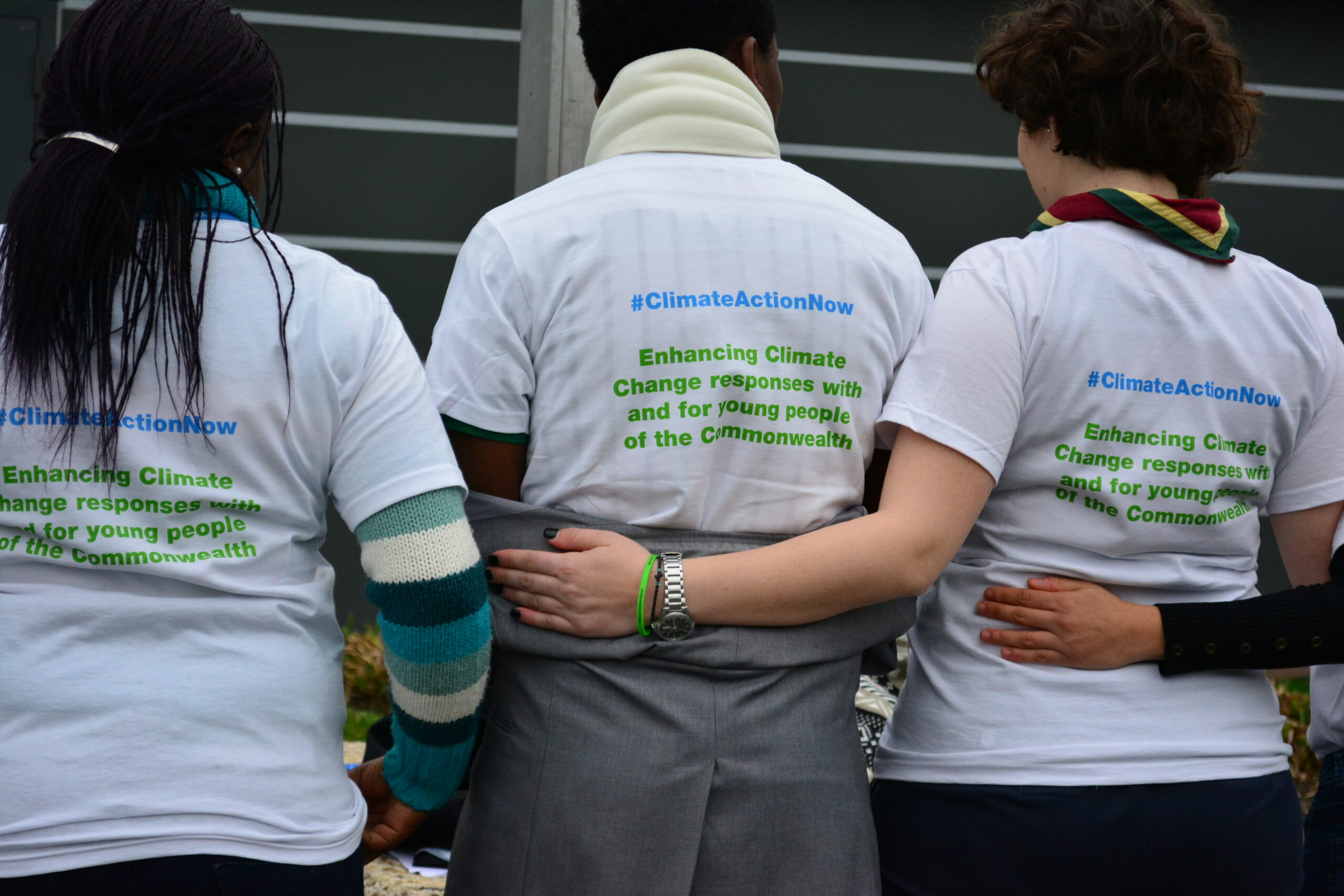The Paris Agreement moves from an accord to climate action!
April 22Today, 22 April 2016 is Earth Day, celebrated around the world by millions of citizens under the theme ‘’Trees for the Earth —Let’s get planting’’. Highly concerned about the impacts of environmental degradation on human health and life, and our common future, people from diverse cultures, social and economic backgrounds, cultures and nations, have decided to join forces on this day to emphasize the important role trees can play in safeguarding our environment, in helping combat climate change by absorbing excess and harmful CO2 from our atmosphere, and in cleaning the air we breathe daily. While they are aware that trees can also help communities achieve long-term economic and environmental sustainability and provide food, energy and income, world citizens are still concerned that planting more trees and caring about them is not the only solution to ensure we protect life while growing in a changing climate.
From Earth Day to the Paris Agreement’ signature — connecting the dots
While the world celebrates Earth Day today, another important event is taking place at the same time in New York City, at the United Nations headquarters, where the signature ceremony of The Paris Agreement is being held. This historic agreement to combat climate change and to accelerate and intensify the actions and investments needed for a sustainable low carbon future was achieved at the 21st session of the Conference of the Parties (COP21) to the United Nations Framework Convention on Climate Change (UNFCCC) which took place in Paris, France, from 30 November to 12 December last year. The Parties to the UNFCCC reached the first-ever legally binding agreement on climate change, which is ‘’acknowledging that climate change is a common concern of humankind, [and that]Parties should, when taking action to address climate change, respect, promote and consider their respective obligations on human rights, the right to health, the rights of indigenous peoples, local communities, migrants, children, persons with disabilities and people in vulnerable situations and the right to development, as well as gender equality, empowerment of women and intergenerational equity’’.
The Paris Agreement’s central aim is to strengthen the global response to the threat of climate change by keeping a global temperature rise this century well below 2 degrees Celsius above pre-industrial levels and to pursue efforts to limit the temperature increase even further to 1.5 degrees Celsius. Despite all efforts and pressure from civil society and marginalized communities that are in the frontlines of climate change impacts, at COP21, world leaders did not reach an agreement to limit global warming to 1.5 degrees Celsius which is stated by scientists as a ‘’security level’’ for ensuring life within climatic impacts. However, the agreement has achieved and strengthened the ability of countries to deal with the impacts of climate change and pushed them to reach these ambitious goals, appropriate financial flows, a new technology framework and an enhanced capacity building framework will be put in place, thus supporting action by developing countries and the most vulnerable countries, in line with their own national objectives stated in their nationally determined contributions (NDCs) submitted to the UNFCCC secretariat in the lead up to COP21.

Bringing world leaders together to remind them about their commitments
To mark the difference with previous climate change agreements and other meetings’ outcomes, it has been agreed at COP21 that The Paris Agreement will be open for signature at the United Nations Headquarters in New York from 22 April 2016 to 21 April 2017, hence this high-level signature ceremony taking place today, on the occasion of Earth Day. Over 180 UN Member States have confirmed their participation to the Opening for Signature Ceremony and around 171 have indicated that they intend to sign the Paris Agreement at the ceremony, with a less number indicating that they intend to sign the Paris Agreement and deposit their instrument of ratification at the ceremony in New York. A good number of Commonwealth Member States have joined these efforts, both to attend the ceremony and to sign the Paris Agreement, such as Antigua and Barbuda, Vanuatu, the United Kingdom, Bangladesh, Malaysia, Barbados, Australia, Ghana, Rwanda, Saint Vincent and the Grenadines, and Cameroon among many others. Commonwealth nations like Saint Kitts and Nevis, Maldives, Fiji, Samoa, Grenada, and Saint Lucia have indicated their intention to attend the ceremony to sign the Agreement as well as and deposit their instrument of ratification. This demonstrates how important Commonwealth countries consider taking significant steps to act on climate change and to implement concrete solutions as part of the Sustainable Development Goal 13. Following the signature ceremony, The Paris Agreement shall enter into force on the thirtieth day after the date on which at least 55 Parties to the Convention accounting in total for at least an estimated 55 % of the total global greenhouse gas emissions have deposited their instruments of ratification, acceptance, approval or accession with the Depositary.
Is signing the Paris Agreement enough to tackle climate change?
Achieving a legally binding agreement is what the world needed. The governments that met and signed the Paris Agreement made it happen, and civil society advocacy efforts to pressure have paid off. However there is still more to do, from high-ambition decisions to concrete actions nationally, and from political commitments to grassroots realizations. The Paris Agreement will only be successful if civil society and other relevant stakeholders work together in ensuring governments and other institutions actively engage in addressing climate change can be hold accountable to their promises and commitments towards an effective Paris Agreement which can enter into force and becomes achievable worldwide. There is still a long way to go, but governments are aware that ambitious words need to be turned into actions. Climate change does not wait, impacts are there and people are suffering from them already, and predications show that the future will not get brighter sooner. For all these reasons, civil society, including young people, has key part to play in ensuring a successful agreement’s implementation, following the signature ceremony. By affirming the importance of education, training, public awareness, public participation, public access to information and cooperation at all levels on the matters addressed in its content; the Agreement has recognized the place and role of non-state actors. The Agreement also provides for enhanced transparency of action and support through a more robust transparency framework. This is an open door which requires all Parties to put forward their best efforts through “nationally determined contributions” (NDCs) and to strengthen these efforts in the years ahead.
As world citizens have their eyes turned to New York where the Paris Agreement is being signed, there is no excuse to fail in implementing successfully the new global agenda on climate change in the post-2015 area. These steps have to reflect equity and the principle of common but differentiated responsibilities and respective capabilities, in the light of different national circumstances as agreed at COP21. Young people as well have no excuse to exclude themselves from this battle like other civil society constituencies involved in the UNFCCC process. At the forty-fourth sessions of the Subsidiary Body for Implementation (SBI 44) and Subsidiary Body for Scientific and Technological Advice (SBSTA 44) which are scheduled in Bonn, Germany, from 16-26 May this year, the first session of the Ad Hoc Working Group on the Paris Agreement (APA 1) will also meet and start reflecting on the implementation steps, and seek ways to hold governments and non-state actors to account. One fact still remains true and accurate: there is no Planet ‘B’ and time is against us. Yet, we all have an opportunity to make history by taking action on climate, and by enabling environments for everyone to play a key part in this goal.





